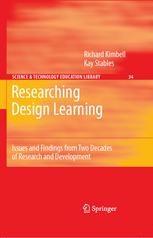

Most ebook files are in PDF format, so you can easily read them using various software such as Foxit Reader or directly on the Google Chrome browser.
Some ebook files are released by publishers in other formats such as .awz, .mobi, .epub, .fb2, etc. You may need to install specific software to read these formats on mobile/PC, such as Calibre.
Please read the tutorial at this link: https://ebookbell.com/faq
We offer FREE conversion to the popular formats you request; however, this may take some time. Therefore, right after payment, please email us, and we will try to provide the service as quickly as possible.
For some exceptional file formats or broken links (if any), please refrain from opening any disputes. Instead, email us first, and we will try to assist within a maximum of 6 hours.
EbookBell Team

5.0
100 reviewsDesign & Technology evolved in the school curriculum from the mid 1960s. By the 1980s it had become mainstream for the British government to fund research exploring what learners could do when challenged with design & technology tasks. The authors worked together on that project, producing in 1991 the first seminal research report on learners’ capability in design & technology.
This book summarises the lessons learned from this and other projects. The book’s messages centre on the designing activity, on learning, teaching and assessment, and, more widely, on what can be learnt about the research process itself. The authors aim to answer questions such as: How does the active, concrete learning tradition enable cognitive and emotional growth? What influences bear upon the process; the teacher, the environment, the task, the learners themselves? Researching such questions, their concerns have integrated the conceptual, the practical and the pedagogic.